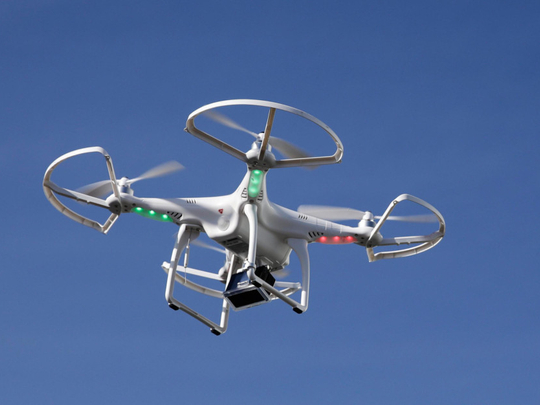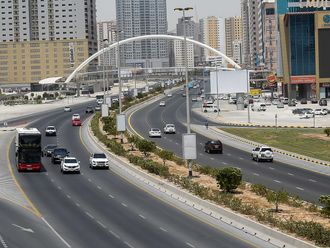
Dubai: Faced with mounting safety concerns and financial losses due to three temporary airport closures since June due to unidentified drones entering secure airspace, Emirates airline called on Tuesday for authorities to consider installing drone detectors at Dubai International Airport.
New technology can now identify unauthorised drones and overwrite commands forcing the flying intruders to ditch when they breach invisible security barriers surrounding airspace at airports.
Speaking on Saturday’s 80-minute suspension of operations at Dubai International Airport — Sharjah International Airport also closed briefly — Emirates said in a statement that the recurring drone problem must be resolved.
“Flight diversions and network disruptions due to unauthorised drone activity in the airspace around Dubai International Airport (DXB) cost Emirates airline millions of dirhams on each occasion, and impacted thousands of passengers,” the airline said in a statement.
Adel Al Redha, Emirates’ Executive Vice-President and Chief Operations Officer, suggested that civil aviation authorities take strong action.
“Safety is always the number one priority in our business. Ensuring safe flight operations by closing the airspace when there is unauthorised drone activity, or other airspace incursions, is the right thing to do,” said Al Redha. “However, the safety risk from unauthorised drone activity and the resulting disruption to customers and operations is unacceptable. We request the authorities to take strong measures and impose penalties to discourage future occurrences, and also consider implementing drone detectors at the airport.”
The call for preventive drone technology is a smart move, said an expert on drone detection technology based in Singapore.
Jason Quek, Regional Sales Director (Middle East) for TeleRadio Engineering, said his firm’s new Skydroner technology “detects, distracts and disables” drones.
Speaking to Gulf News, Quek said that Skydroner “performs continuous monitoring of drone activities. Upon detection of drone radio frequency signature, the system generates an alarm and pinpoints the location of the drone and its operator with its detection range”.
The technology then distracts — “based on the make and model, the SkyDroner will issue different commands to the respective drone. This command includes: Return to operators, to land at designated location or to freeze video transmission”.
Noting that the company is undergoing testing compatibility issues with other airport communications, Quek said the Skydroner technology then disables “all communication link between the drone and its operator, forcing the drone to land”.
Time is of the essence, given a rise in the use of drones around the world in business and for hobbyists.
Quek said “with the rapid increase of drone applications, many authorities around the world are facing unprecedented challenges of airspace control. There have been repeated drone invasions into protected areas such as airports, seaports and other vital installations. It is a clear indication that a possible disaster is impending”.
Drones causing ripple effect
Drone intrusions at Dubai International Airport are creating a rippling domino effect down the operational chain for airlines when operations are briefly suspended, Adel Al Redha, Emirates’ Executive Vice-President and Chief Operations Officer, said on Tuesday.
“Flight diversions and extensive holding are costly. Financial aspects aside, there is huge inconvenience to passengers, and also a negative impact on Emirates’ reputation. Sending an aircraft to an alternative airport and managing delays to arrivals or departures are not as straightforward as it sounds,” Al Redha said in a statement. “There is always a ripple effect on the rest of our hub operations in terms of securing our passengers’ flight connections, ensuring our disrupted customers are cared for, planning the return of aircraft to support other scheduled flights, and a myriad other arrangements to manage the disruption from crew to catering to ground handling.”
The last of three drone intrusions and Dubai Airport closures since June last Saturday, he said, resulted in the diversion of 22 inbound flights, including 11 operated by Emirates.
The airline said in a statement that the “affected Emirates flights diverted to other airports in the UAE, and these aircraft later returned to DXB with delays ranging from 2 to 4 hours. The knock-on effect of the airspace closure impacted two later Emirates flights which also had to be diverted while the world’s busiest international airport worked to restore normal schedules. In addition, other inbound flights were on hold due to airspace congestion and outbound flights were delayed to accommodate connecting passengers after the airspace reopened. More than 5,000 Emirates passengers were inconvenienced on this occasion alone”.
In September, Dubai Airport was shut down for 30 minutes causing 13 Emirates flight diversions and delays in 85 Emirates departures.












